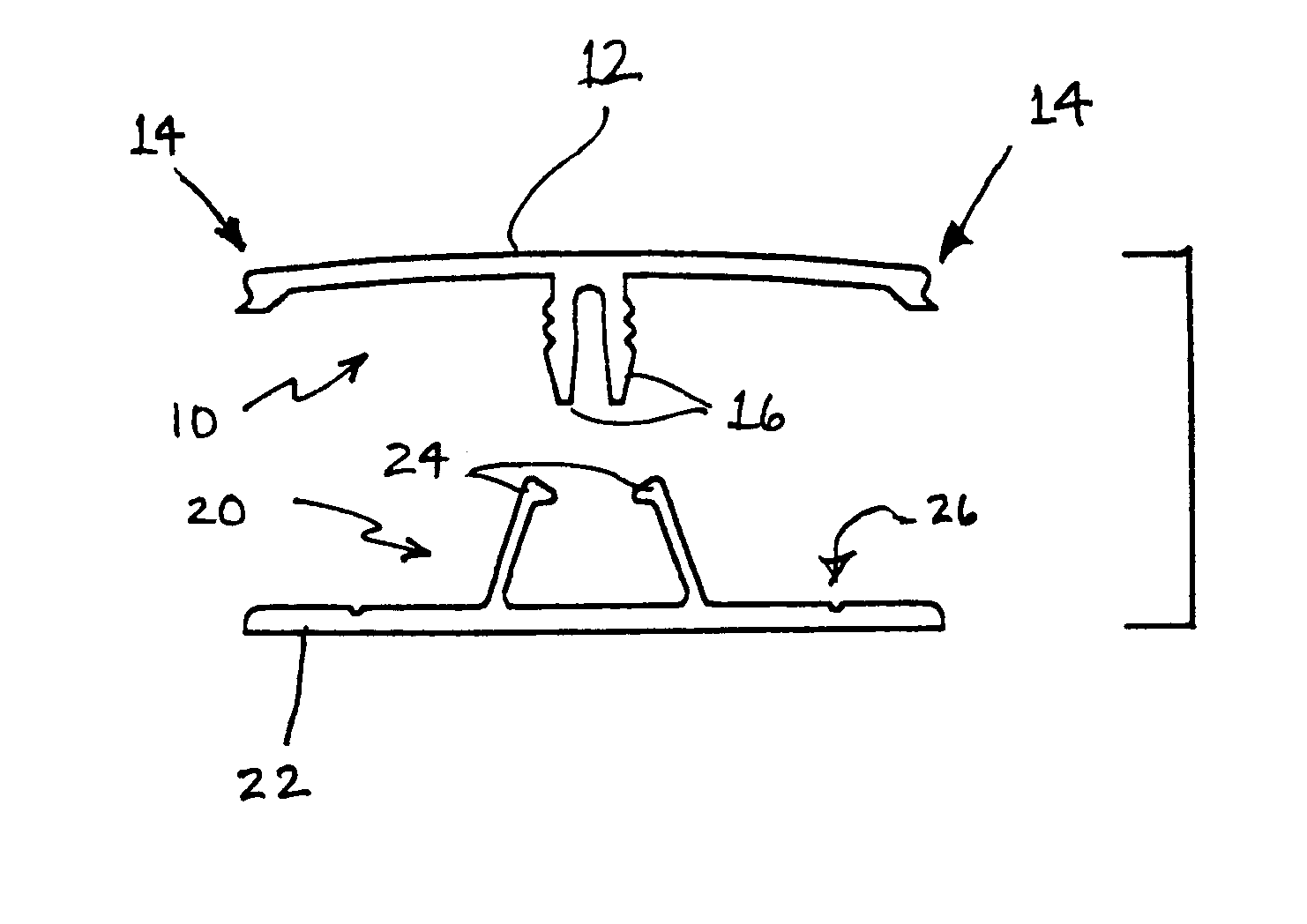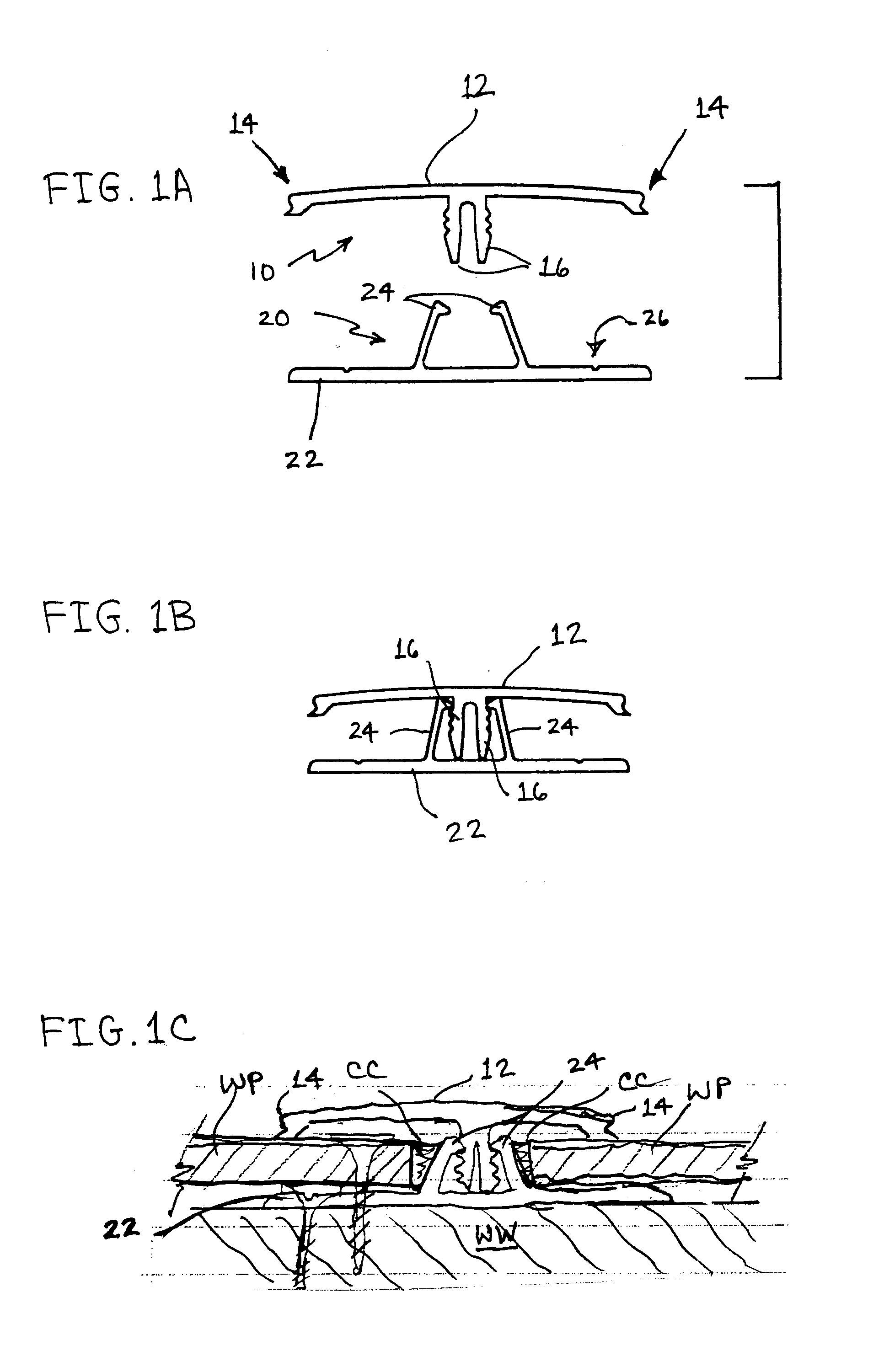Extrusion devices for mounting wall panels
a technology of extrusion device and wall panel, which is applied in the direction of walls, ceilings, doors/windows, etc., can solve the problems of building failure, affecting the clean appearance of the panel, and the use of conventional extrusion device is rather inconvenient and expensive,
- Summary
- Abstract
- Description
- Claims
- Application Information
AI Technical Summary
Benefits of technology
Problems solved by technology
Method used
Image
Examples
Embodiment Construction
In the following detailed description, certain preferred embodiments of two-piece and one-piece extrusion devices for mounting wall panels are described. However, it is to be understood that these embodiments are intended only as examples of implementation of the principles of the present invention, and the full scope of the invention is not limited to these examples.
Referring to FIGS. 1A and 1B, a preferred embodiment of a two-piece, straight-type (referred to as "H" type) extrusion is shown having an outer cap 10 provided with a radiused outer surface 12, compound water-shedding edges 14 on opposite lateral sides thereof, and a pair of spaced-apart insertion fingers 16 projecting perpendicularly downward from an inner surface of the cap 10, and an inner receiver base 20 having a planar mounting portion 22 for receiving an end of a wall panel mounted thereon. The receiver base has a pair of angled receiver flanges 24 spaced apart by a given width W and projecting upwardly from a su...
PUM
 Login to View More
Login to View More Abstract
Description
Claims
Application Information
 Login to View More
Login to View More - R&D
- Intellectual Property
- Life Sciences
- Materials
- Tech Scout
- Unparalleled Data Quality
- Higher Quality Content
- 60% Fewer Hallucinations
Browse by: Latest US Patents, China's latest patents, Technical Efficacy Thesaurus, Application Domain, Technology Topic, Popular Technical Reports.
© 2025 PatSnap. All rights reserved.Legal|Privacy policy|Modern Slavery Act Transparency Statement|Sitemap|About US| Contact US: help@patsnap.com



